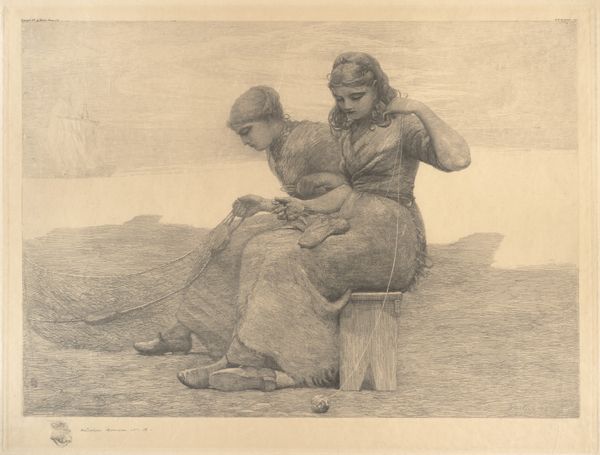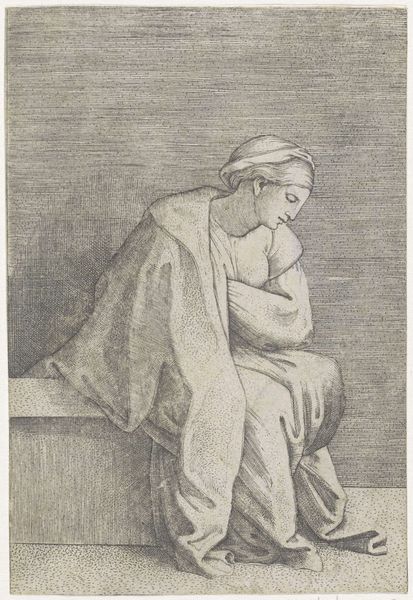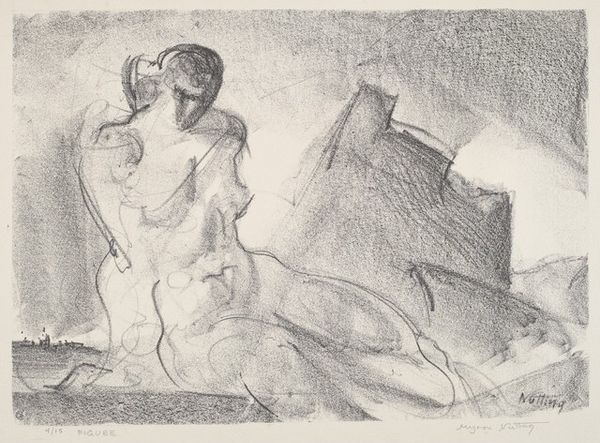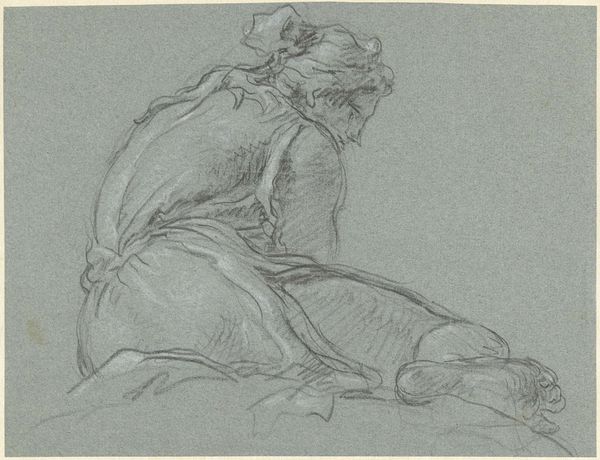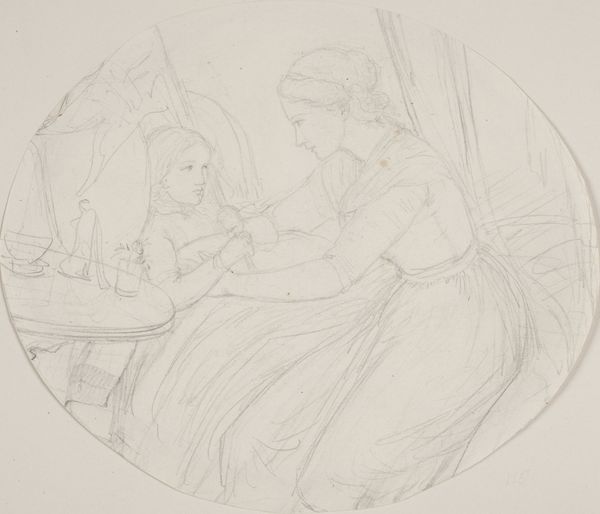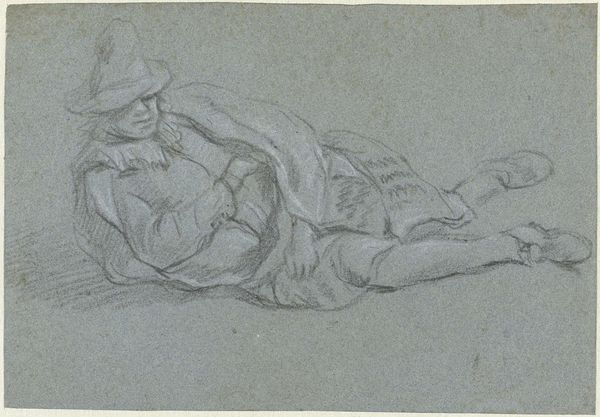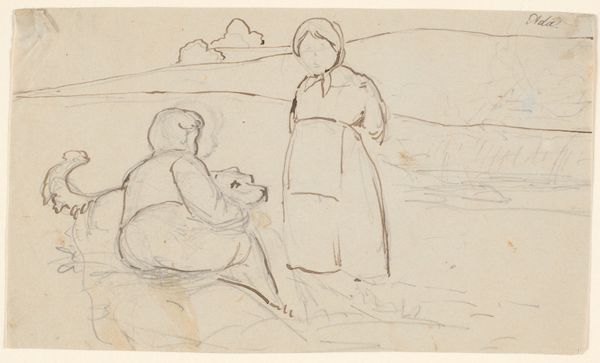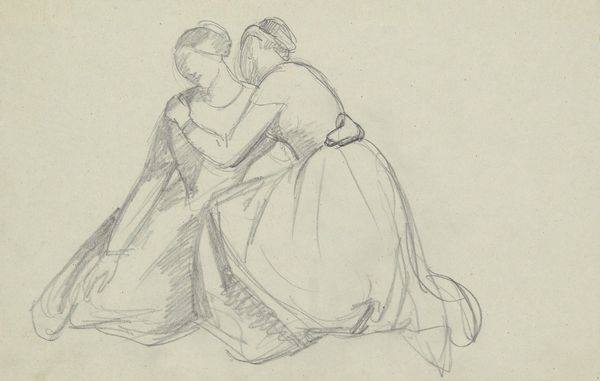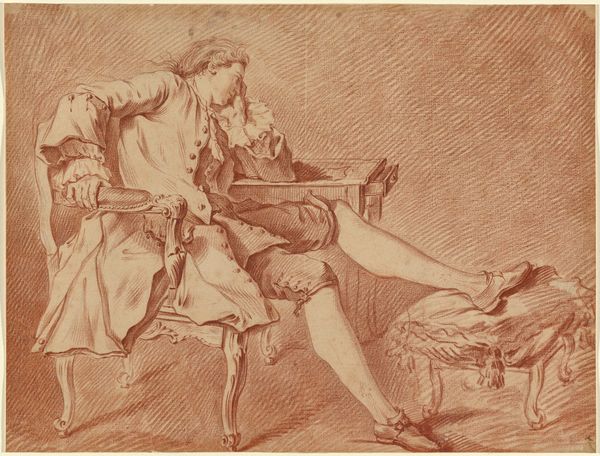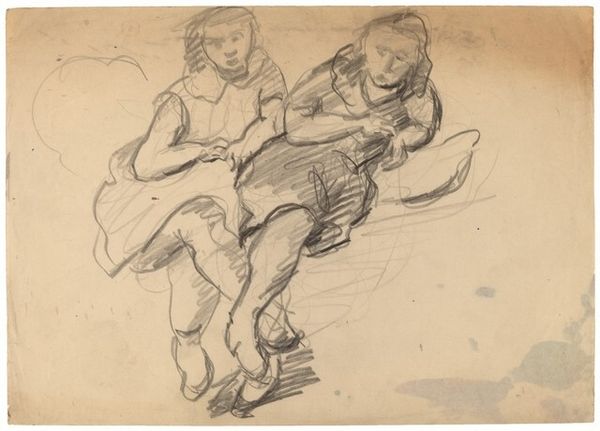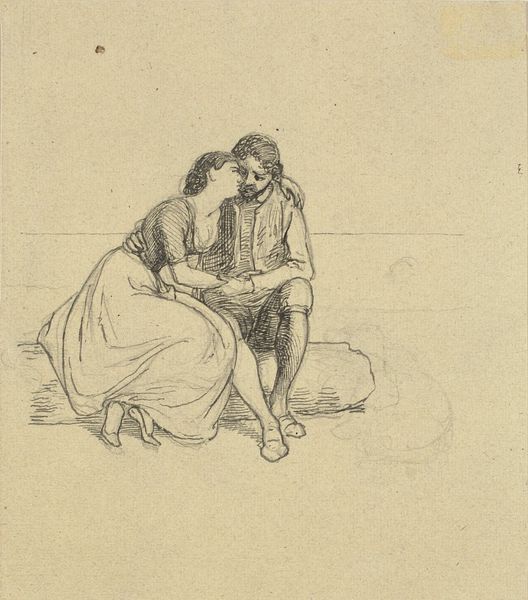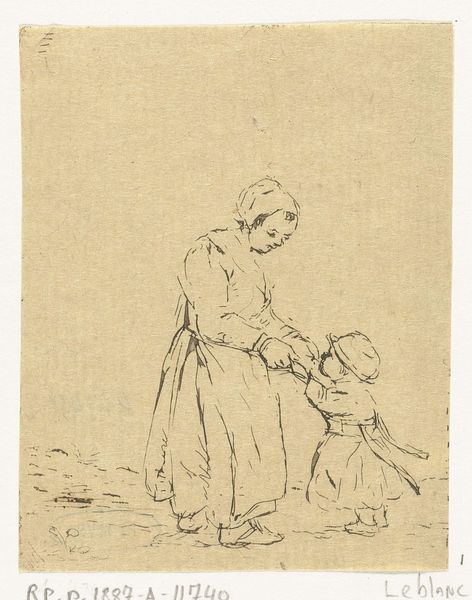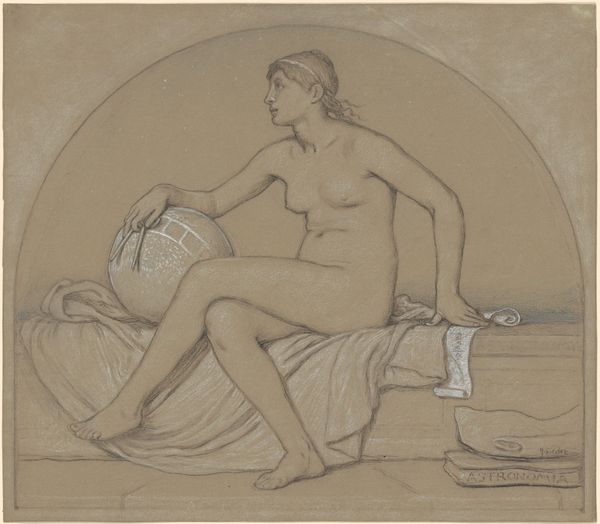
drawing
#
pencil drawn
#
drawing
#
amateur sketch
#
light pencil work
#
pencil sketch
#
sketched
#
charcoal drawing
#
portrait reference
#
pencil drawing
#
pencil work
#
graphite
Copyright: Public Domain: Artvee
Curator: Let's consider Winslow Homer’s pencil drawing from 1888, “Mending the Tears.” Editor: Immediately, I'm struck by the somber stillness. The grey tonality and bowed heads suggest a quiet moment, perhaps after a storm, full of reflection. Curator: Yes, it’s a drawing, a preparatory study perhaps. Notice the intense concentration of the figures. Homer is depicting women engaged in the work of mending fishing nets; the means of subsistence are on full display. It speaks volumes about labor and survival. Editor: Absolutely. Nets, in art, often symbolize entrapment, fate, or destiny. By showing them carefully repairing the nets, are they attempting to mend their fate? Restore order, or perhaps control over their destiny? The figures certainly hold those weighty possibilities, but there is that striking ball of twine by the feet of the central figure: the twine connects to those "tears." Curator: The repetitive action of mending also reveals the cyclical nature of their lives – the continuous labor required to maintain their livelihood. There’s a compelling link between the material and social reality. The nets as infrastructure. Editor: Agreed, the work connects to something more timeless and fundamental about human persistence, perhaps about women specifically and their symbolic connection to repairing the very fabric of life itself. Curator: And what of the relationship to other industries. Did these women also harvest or prepare food to trade; what of local production versus external reliance? These choices shaped all social systems on the North American coast. Editor: All of it imbues the work with a quiet dignity; and it leaves me pondering questions that extend far beyond the paper and graphite used. It becomes a mirror to anxieties about community sustenance during turbulent times. Curator: Seeing art as evidence of production can unlock different historical truths; and yet, through symbol, art opens new avenues to comprehend individual and group trauma. Editor: Exactly; for me, it's those intersections of shared experiences which gives art power and enduring impact, as something to cherish in the visual culture we are still collectively producing.
Comments
No comments
Be the first to comment and join the conversation on the ultimate creative platform.
